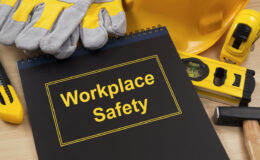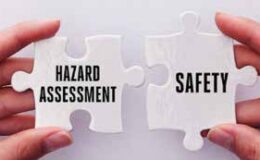By Chris Demeter, Senior Loss Control Consultant
What is a “near miss?” Webster defines it as: “A result that is nearly, but not quite, successful.” What does this mean to business? It simply means that a serious accident almost occurred.
Statistics tell us that for every 300-near misses there is one serious injury. According to the Bureau of Labor Statistics (BLS), more than threemillion recordable non-fatal injuries were reported in 2013. If we multiply each injury by 300, the result is 900-million near misses for 2013 alone.
Have you ever stepped out to the shop floor from an outward-opening door nearly hitting a worker who jumps back just in time to avoid a mishap? How about, instead of using a ladder, an employee uses a 5-gallon bucket to stand on, loses balance, and stumbles to the ground; although the employee is shaken, there is no injury. I was just in a shop last month performing their annual loss control walkthrough and noticed an employee standing on a 5-gallon bucket to reach for some stock; fortunately, he did not lose his balance and fall to the ground. I recommended to prevent possible injury, employees should be instructed not to stand on a bucket to elevate oneself. Instead, the use of a rolling steel ladder should be used for a more secured and stable way of accessing heights. This type of ladders can purchased at most any safety supply company.
I have been with MTMIC for almost 13-years and have performed literally thousands of loss control safety walkthroughs. I have witnessed on more than one occasion a machinist, bench hand, or worker operating a piece of equipment such as a drill press, lathe, or mill wearing gloves. This practice creates an entanglement hazard, which I consider a near miss. Employees should never wear loose-fitting clothing, jewelry, or other items that could become entangled in machinery, and long hair should be worn under a cap or otherwise contained to prevent entanglement in moving machinery.
Before coming to work for MTMIC, I was the Safety Director for a prototype sheet metal shop of 250 employees in Livonia. I found more support from employees when investigating a near miss than when investigating an accident. Many times, I have found employees are much more open to make a positive team contribution towards the prevention of an accident through the discussion of a near miss than if an accident has already occurred.
Like any program, employees want to know their employer is serious about the program, so management needs to work hard and be persistent in promoting the value of investigating near misses. You have to demonstrate over time you are committed to it. If you can do that, you will have a better program.”
Some people may be tempted to write off near misses as “no harm, no foul” situations. However, I would say employers who track near misses, determine how and why they occurred, and take corrective action can prevent similar – or more serious – incidents from happening in the future. Do not look at what happened; look at what could have happened.
Three key elements of a successful near-miss program:
- You must carefully investigate it
- Determine the root causes
- Implement appropriate controls accordingly
Letting a near miss go unreported provides an opportunity for a serious accident to occur. Correcting these actions or conditions will enhance the safety within your facility and provide a better working environment for everyone involved. Do not let yourself or coworkers become statistics – report near misses right away!
An Accident Investigation section, which includes a Near Miss form, is available on the MTMIC online Portal. To prevent or reduce the possibility of future accidents, it is important that you properly and promptly investigate all near misses and accidents, no matter how minor or severe. PREVENT AN ACCIDENT THAT IS ABOUT TO HAPPEN!





